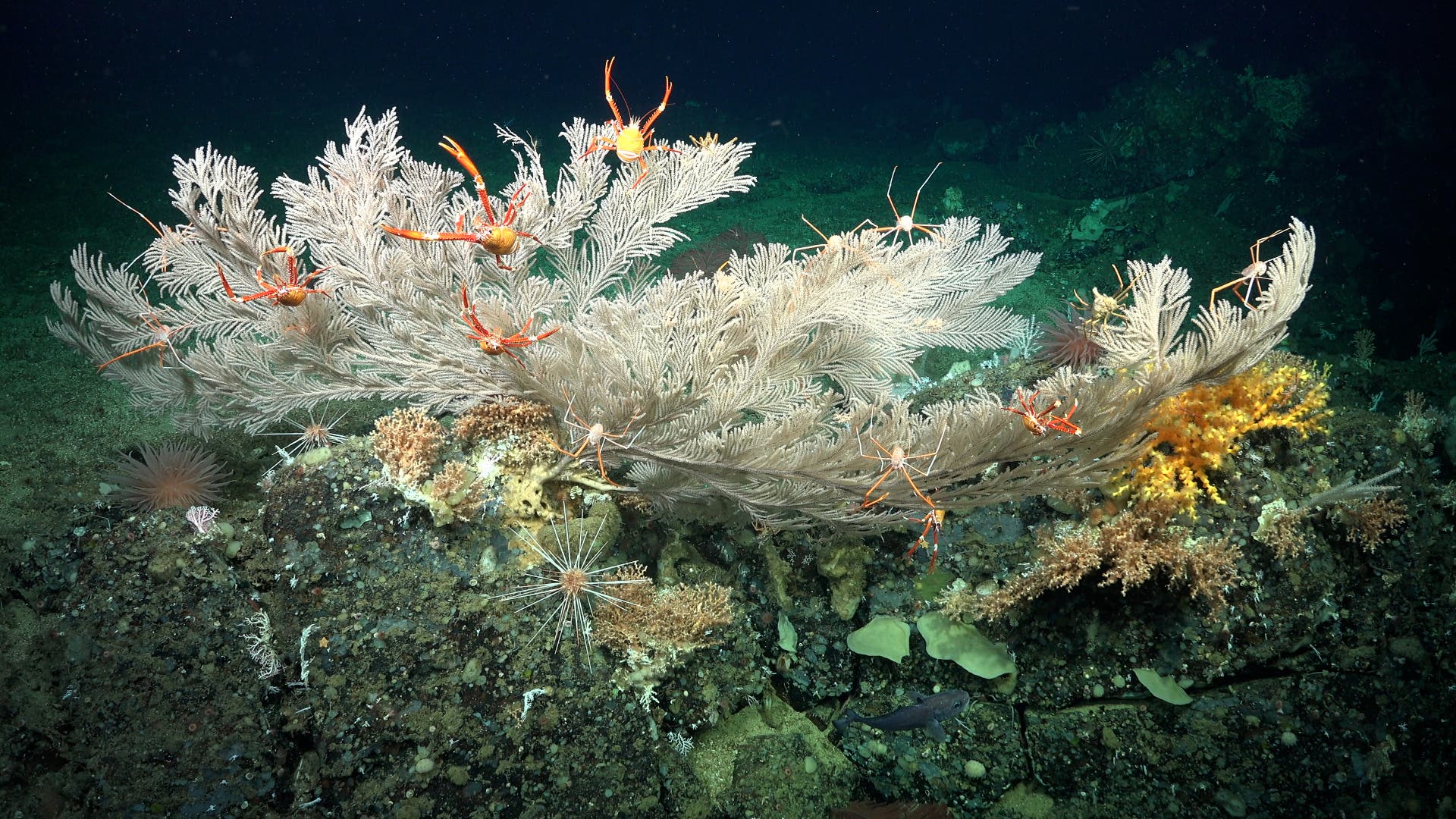Galapagos: Diving offers uncharted deep-sea reefs and underwater mountains
The deep sea is uncharted territory. This was proven by an expedition to the Galapagos Islands, where previously unknown coral reefs with many species were discovered.
© Schmidt Ocean Institute (details)
Deep-sea coral reefs, such as these in the Galapagos Archipelago, have barely been explored, but are home to many species, as can be seen here: corals, anemones, crabs and sea urchins are just a few of them.
The biodiversity of the waters surrounding the Galapagos Islands can at least rival the biodiversity on land – even if it is less well-known and still completely unknown in large parts. This is shown in photos of the diving robot “Subastian”, taken during an exploratory trip carried out by the Schmidt Ocean Institute in the archipelago. A previously unknown cold-water coral reef and two underwater mountains that have not yet been accurately recorded on maps have been discovered. According to the research institute.
This is only the second discovery of such an ecosystem in the Ecuadorian National Park, following a research expedition by Woods Hole Oceanographic Institution to discover a cold-water coral reef in April 2023. The largest reef is more than 800 meters long, while the second reef is more than 800 meters long. The smallest is 250 metres. Both feature a rich diversity of stony coral species, indicating that they likely formed over thousands of years. Its depth ranges between 370 and 420 metres
One of the objectives of the expedition was, among other things, to create high-resolution maps of these reefs using laser scanning: this method works with a resolution of 2 mm, so that even animals living on the sea floor can be recorded, which would otherwise not be possible. . In addition to the coral reefs, the team also measured and mapped two unknown seamounts at high resolution. The existence of these seamounts was suspected based on satellite data and has now been confirmed.
In another part of the expedition, the research ship headed out to sea around Isla del Coco, a national park belonging to Costa Rica but with close biological links to the Galapagos Islands. The underwater mountains between the two archipelagos could have served as a springboard and helped spread species – in pre-Earth eras perhaps also land animals and plants, when mountains still rose above the water. For example, a representative of Darwin’s finches, which are native to the Galapagos Islands, also lives on Isla del Coco.
Industrial fishing is prohibited in both national parks, which is why the marine ecosystems are in very good condition. Among other things, there are good populations of different shark species, some of which congregate in the underwater mountains to breed there.
Please allow Javascript to maintain the full functionality of Spektrum.de.

“Alcohol buff. Troublemaker. Introvert. Student. Social media lover. Web ninja. Bacon fan. Reader.”







More Stories
Bremen students’ projects from science to sports
The northern lights light up Germany’s night sky – Science
The northern lights can be clearly seen over the Thuringian Forest